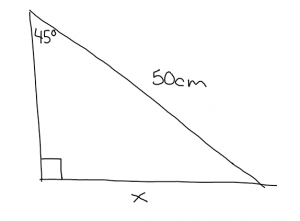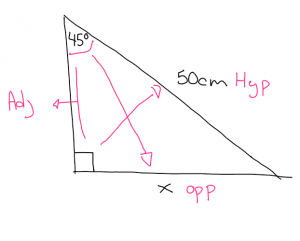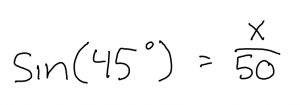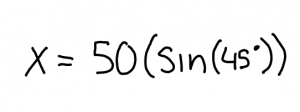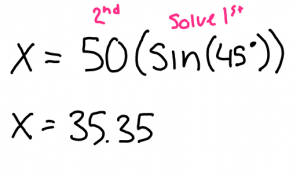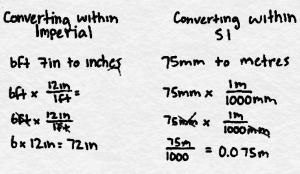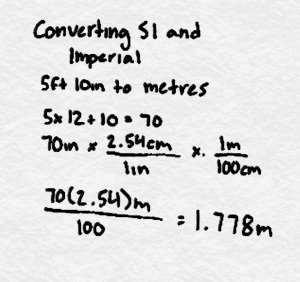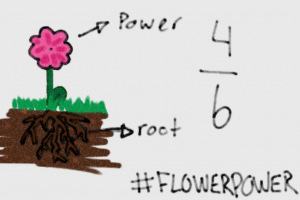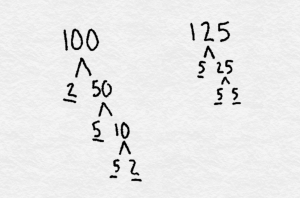This week in class we learned how to find a side in a right triangle. All you need to find a missing side is 1 side and 1 angle.
The picture above is an example of a question asking to figure out the missing side.
The first thing you should always do is label the sides in respect to the indicated angle.
Once all your sides are labeled you then have to decide what sine ratio you need to use. A trick to remember what sine ratio is appropriate for each question is SOH CAH TOA.
For my example I will be using SIN because the adjacent side does not yet have a measurement.
Once all my sides were labeled I put the numbers into an equation.
The picture above shows how I canceled the denominator (50cm) on the right side and am multiplying 50 onto the left side. Doing this it leaves the right side as x so you can solve for x.
The equation has been written out so you can clearly see how to solve it.
By using the appropriate sine ratio I was able to solve for X.

